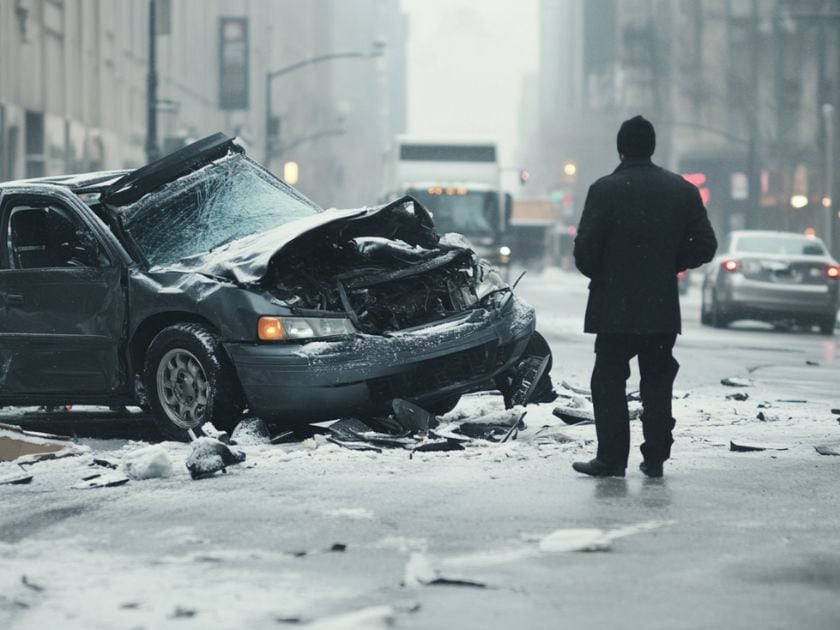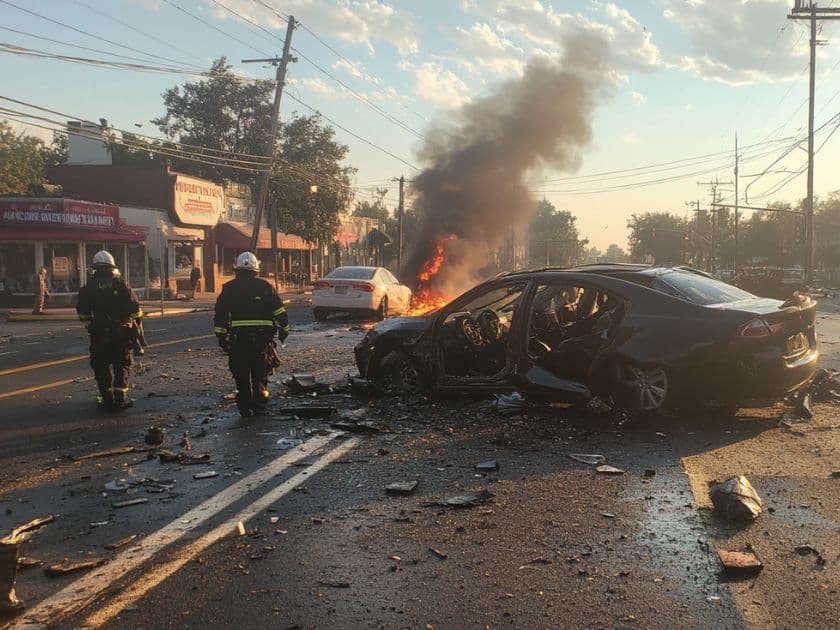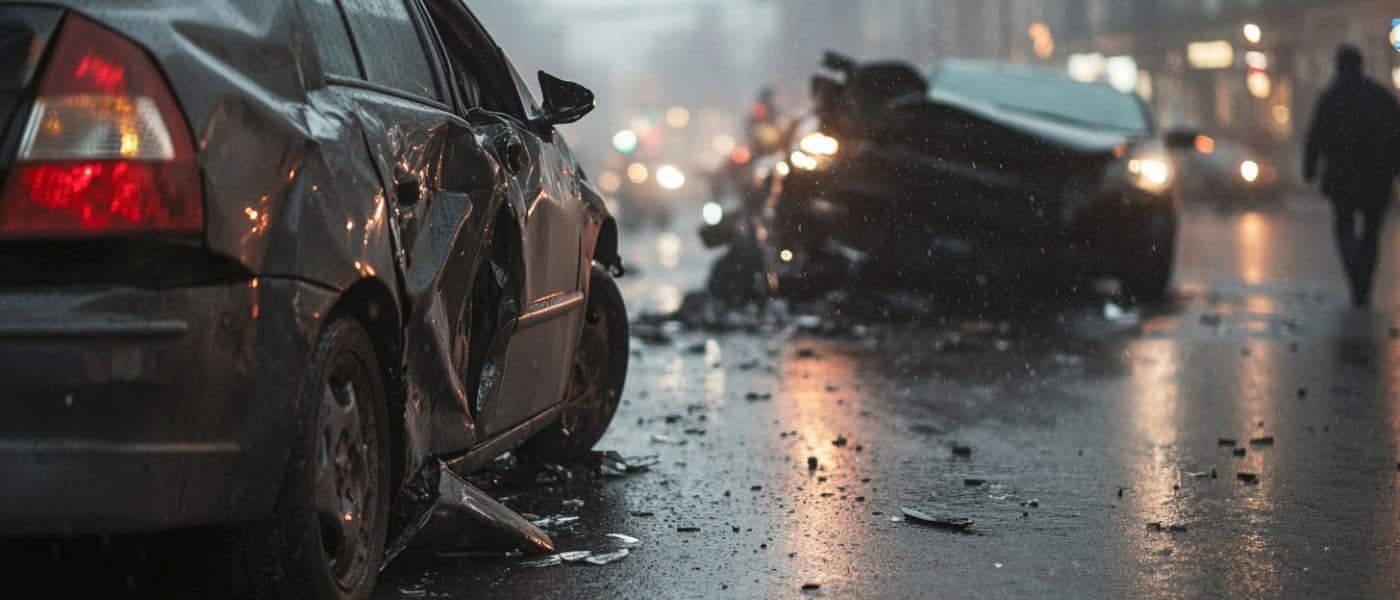Understanding Total Loss Threshold in Colorado Car Accidents: Key Factors and Implications
Key Takeaways
- A car is totaled in Colorado when repair costs reach 100% of its value
- Insurance companies assess vehicle value and repair costs to determine total loss
- Understanding the total loss process helps drivers navigate post-accident situations
Car accidents can be stressful, especially when your vehicle is severely damaged. In Colorado, understanding the total loss threshold is crucial for drivers involved in accidents. A car is considered a total loss in Colorado when the cost of repairs equals or exceeds 100% of the vehicle’s actual cash value.
This threshold helps insurance companies decide whether to repair a damaged car or declare it a total loss. When a car is totaled, the insurance company pays the owner the vehicle’s value instead of covering repair costs. Knowing this can help drivers make informed decisions after an accident.
The total loss process involves assessing the car’s pre-accident value and estimating repair costs. Insurance adjusters use various factors to determine a fair value for the vehicle. These may include its age, mileage, condition, and market prices for similar cars in the area.

Understanding Total Loss in Colorado
Total loss situations can greatly impact insurance claims after car accidents in Colorado. The state has specific rules for determining when a vehicle is considered a total loss.
What Constitutes a Total Loss?
A total loss occurs when a car is damaged so badly that repair costs exceed its value. Insurance companies use a formula to decide if a vehicle is totaled. They compare the repair costs to the car’s actual cash value before the accident.
If repairs would cost more than the car is worth, it’s usually declared a total loss. Some insurers may also total a car if repairs would cost 70-80% of its value.
Severe damage from crashes, floods, or fires often leads to total losses. Even if a car looks fixable, hidden damage can push repair costs over the limit.
Total Loss Threshold Explained
Colorado uses a total loss threshold of 100%. This means a car is officially totaled when repair costs equal or exceed its pre-accident value.
For example, if a car was worth $10,000 before a crash and repairs would cost $10,000 or more, it’s a total loss. The 100% threshold is higher than many other states.
This rule aims to balance consumer protection with keeping repairable cars on the road. It gives insurers some flexibility in borderline cases.
The threshold applies to all vehicles, regardless of age or type. Newer, more valuable cars have a higher dollar amount for their threshold.

Colorado Law on Total Loss Vehicles
Colorado requires special titles for totaled vehicles. This helps protect used car buyers by disclosing past damage.
When an insurer declares a car a total loss, they must apply for a salvage title. This title stays with the car even if it’s repaired and resold.
Owners can sometimes keep a totaled car by “buying it back” from their insurer. They must still get a salvage title before repairs.
Cars with salvage titles need inspection before they can be driven again. This ensures they’re safe and roadworthy after major repairs.
Determining Car Value and Damage
After a car accident in Colorado, figuring out the value of your vehicle is key. Insurance companies use specific methods to decide if a car is a total loss. They compare the car’s worth to how much it would cost to fix.
Actual Cash Value vs. Repair Costs
Actual Cash Value (ACV) is what your car is worth right now. It’s not the same as what you paid for it. Insurance companies look at the ACV and repair costs. If repairs cost more than the car’s value, it’s often called a total loss.
For example, if your car is worth $10,000 and repairs cost $8,000, it’s not a total loss. But if repairs cost $12,000, it probably is. Insurance companies might use a formula to decide. They might say it’s a total loss if repairs cost 75% or more of the car’s value.
The Role of Kelley Blue Book
Kelley Blue Book is a trusted source for car values. Insurance companies often use it to find out what your car is worth. They look at your car’s make, model, year, and condition.
Kelley Blue Book gives different values:
- Trade-in value
- Private party value
- Retail value
Insurance companies usually use the private party value. This is what your car might sell for between two people. It’s usually less than the retail value but more than the trade-in value.

Calculating Current Market Value
Current market value is what your car could sell for right now. It’s close to the ACV. To find it, insurance companies look at:
- Similar cars for sale in your area
- Recent sales of similar cars
- Your car’s condition before the accident
- Any special features your car has
They might also check other pricing guides besides Kelley Blue Book. These could include NADA Guides or Black Book. The goal is to get a fair price based on real market conditions.
Your car’s mileage and wear and tear also affect its value. A car with low miles might be worth more. One that needs lots of repairs might be worth less.
Insurance Coverage and Claims Process
When dealing with a total loss in Colorado, understanding insurance coverage and the claims process is crucial. Proper knowledge can help you navigate the situation and get fair compensation.
Filing an Insurance Claim
Contact your insurance company right away after an accident. Give them all the facts about what happened. Take photos of the damage and gather any police reports. Your insurer will assign an adjuster to assess the car’s condition. They’ll decide if it’s a total loss based on repair costs and the car’s value. Be ready to provide details about your car’s features and condition before the crash.
Understanding Deductibles
A deductible is the amount you pay before insurance kicks in. For total loss claims, this amount is taken from your payout. If your car is worth $10,000 and you have a $500 deductible, you’ll get $9,500. Higher deductibles mean lower premiums but more out-of-pocket costs in a claim. Check your policy to know your deductible amount.
Liability and Comprehensive Coverage
Liability coverage pays for damage you cause to others. It doesn’t cover your car in a total loss. Comprehensive coverage protects against theft, vandalism, and natural disasters. It also covers total loss scenarios. If you’re not at fault, the other driver’s liability insurance should pay for your totaled car. Your own comprehensive coverage can help if the other driver is uninsured.
Counteroffers and Payouts
Don’t accept the first offer if it seems low. Research your car’s value using resources like Kelley Blue Book. Make a counteroffer with proof of your car’s worth. This could include recent upgrades or low mileage. Negotiate firmly but fairly. If you can’t agree, consider hiring an appraiser. Once you settle, the insurer will pay you the agreed amount minus your deductible. They’ll then take ownership of your totaled vehicle.

Additional Insurance Considerations
Insurance policies offer different types of coverage for total loss situations. Some options can provide extra financial protection beyond standard policies.
Gap Insurance for Total Loss
Gap insurance covers the difference between a car’s actual cash value and the amount owed on a loan or lease. This coverage is helpful when a car is totaled and the insurance payout is less than the remaining loan balance. Gap insurance prevents drivers from owing money on a car they no longer have.
Many lenders require gap insurance for new car purchases. It’s often bundled with car loans but can be bought separately. The cost is usually a small percentage of the regular insurance premium. Gap coverage ends once the loan balance drops below the car’s value.
Property Damage Liability Coverage
Property damage liability pays for damage to other people’s property in accidents you cause. It’s required in Colorado. This coverage applies when you total someone else’s car.
The minimum required in Colorado is $15,000. Higher limits offer more protection. A total loss claim could easily exceed $15,000 for a newer car. Drivers should consider limits of $50,000 or more to avoid paying out of pocket.
Property damage liability also covers other types of property like fences or buildings. It doesn’t pay for damage to your own car in an at-fault crash.
Legal Aspects of Total Loss Situations
Total loss cases after car accidents can be complex. Legal help is often needed to get fair compensation and deal with insurance issues.
Role of a Car Accident Attorney
Car accident attorneys play a key role in total loss cases. They help clients understand their rights and options. These lawyers can:
• Review insurance policies
• Calculate the true value of the damaged vehicle
• Negotiate with insurance companies
• File lawsuits if needed
Attorneys know Colorado’s laws on total loss thresholds. They make sure insurers follow the rules when deciding if a car is totaled.
Car accident lawyers also look out for unfair practices. Some insurers may try to undervalue vehicles or deny valid claims.
Navigating Personal Injury Cases
Total loss situations often involve injuries too. A personal injury attorney can handle both property damage and bodily injury claims.
These lawyers gather evidence to prove fault and damages. They may:
• Get police reports and witness statements
• Work with medical experts
• Document lost wages and other costs
Personal injury cases can be more complex than just car value disputes. Attorneys help clients get fair payment for medical bills, pain, and suffering.
They also deal with insurance company tactics. Some insurers try to settle quickly for low amounts. Lawyers protect clients from unfair offers.

Aftermath of a Total Loss Accident
A total loss accident can have major impacts on your vehicle ownership and insurance situation. You’ll need to navigate issues around vehicle titles and leasing agreements.
Dealing with a Salvaged Title
When a car is deemed a total loss, it often gets a salvage title. This means the car has been badly damaged and can’t be driven legally. To get the car back on the road, you must repair it and get a rebuilt title.
Getting a rebuilt title involves:
- Fixing the car to meet safety standards
- Having it inspected by the state
- Filling out paperwork
- Paying fees
Cars with rebuilt titles are worth less than those with clean titles. They can be harder to insure and sell. Some people choose to sell totaled cars to salvage yards instead.
Options for a Totaled Leased Car
If your leased car is totaled, you still owe money on the lease. Your options include:
- Use the insurance payout to cover the remaining lease balance
- Pay off the lease yourself if the payout is too low
- Roll any remaining balance into a new lease
Check your lease agreement. Some have gap insurance that covers the difference between the car’s value and what you owe.
Talk to the leasing company about your choices. They may offer deals on a new lease to keep you as a customer. Compare all options before deciding.
Protecting Yourself After a Total Loss
Being prepared can make a total loss situation less stressful. Consider these key takeaways:
- Keep detailed records of your car’s maintenance and any improvements
- Review your insurance coverage regularly to ensure adequate protection
- Understand your policy’s deductibles and coverage limits
- Consider gap insurance if you owe more than your car is worth
- Know your rights under Colorado law regarding total loss claims
Remember that a total loss doesn’t have to be a total disaster. By understanding Colorado’s 100% threshold rule, knowing your insurance options, and being prepared to negotiate with insurers, you can better protect your interests after an accident. If you’re unsure about any aspect of your total loss claim, don’t hesitate to consult with a qualified attorney who can help guide you through the process.


